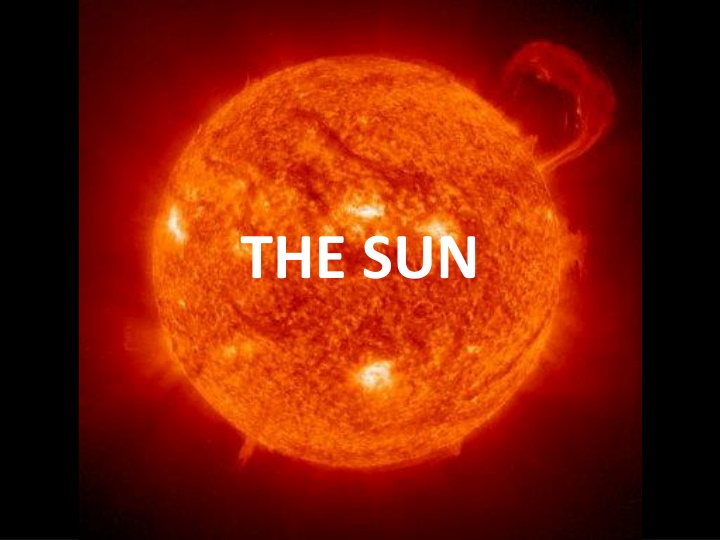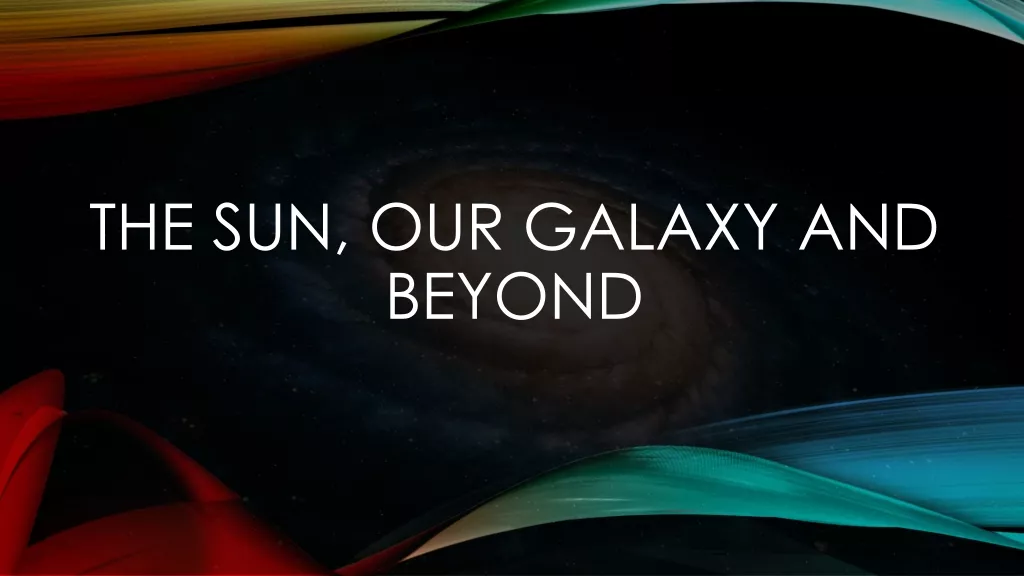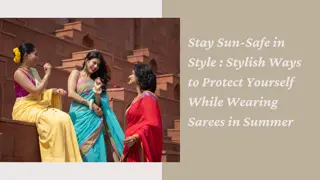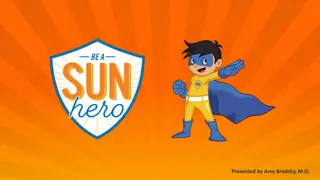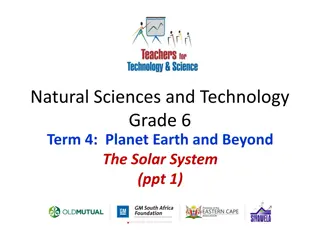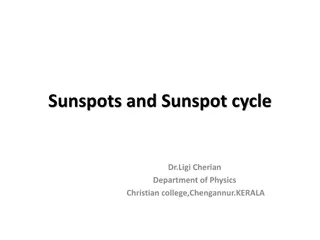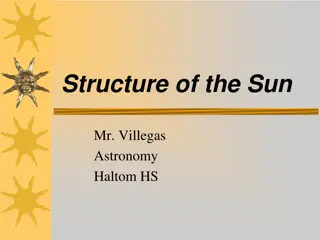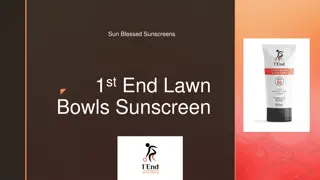The Sun: A Closer Look at Our Star
Exploring the fascinating characteristics of the Sun, we delve into its composition, energy production through nuclear fusion, core processes, radiation and convection zones, and the layers of its atmosphere. Witness the Sun's magnificence and understand the mechanisms that drive its life-giving energy.
Download Presentation

Please find below an Image/Link to download the presentation.
The content on the website is provided AS IS for your information and personal use only. It may not be sold, licensed, or shared on other websites without obtaining consent from the author.If you encounter any issues during the download, it is possible that the publisher has removed the file from their server.
You are allowed to download the files provided on this website for personal or commercial use, subject to the condition that they are used lawfully. All files are the property of their respective owners.
The content on the website is provided AS IS for your information and personal use only. It may not be sold, licensed, or shared on other websites without obtaining consent from the author.
E N D
Presentation Transcript
INTERIOR Unlike Earth, the sun does not have a solid surface. The sun is a ball of glowing gas through and through. About 3/4 of the sun's mass is hydrogen and 1/4 is helium. Like Earth, the sun has an interior and an atmosphere. The sun's interior consists of the core, the radiation zone, and the convection zone.
CORE The sun produces an enormous amount of energy in its core, or central region. The sun's energy comes from nuclear fusion. During nuclear fusion, hydrogen atoms join together to form helium. Nuclear fusion only can take place under conditions of extremely high pressure and temperature. The temperature inside the sun's core reaches 15 million C, high enough for nuclear fusion to take place.
The total mass of the helium produced by nuclear fusion is slightly less than the total mass of the hydrogen that goes into it. What happens to this mass? It is changed into energy that slowly moves outward from the core, eventually escaping into space.
RADIATION ZONE The energy produced in the sun's core moves outward through the middle layer of the sun's interior, the radiation zone. The radiation zone is a region of very tightly packed gas where energy is transferred mainly in the form of electromagnetic radiation. Because the radiation zone is so dense, energy can take more than 100,000 years to move through it.
CONVECTION ZONE The convection zone is the outermost layer of the sun's interior. Hot gases rise from the bottom of the convection zone and gradually cool as they approach the top. Cooler gases sink, forming loops of gas that move energy toward the sun's surface.
THE SUNS ATMOSPHERE Photosphere: The inner layer of the sun's atmosphere. Chromosphere: The glow that comes from the middle layer of the sun's atmosphere. Corona: The outer layer that looks like a white halo around the sun. The corona extends into space for millions of kilometers and gradually thins into streams of electrically charged particles called solar wind.
CORONA SOLAR WIND
FEATURES ON THE SUN Features on or just above the sun's surface include sunspots, prominences, and solar flares.
Sunspots: Areas of gas on the sun's surface that are cooler that the gasses around them. Cooler gases don't give off as much light as hotter gases, which is why sunspots look darker than the rest of the sun's surface. Prominences: Huge reddish loops of gas that often link different parts of sunspot regions. Solar Flares: Gaseous eruptions on the sun's surface. SUNSPOTS
PROMINENCE SOLAR FLARE
